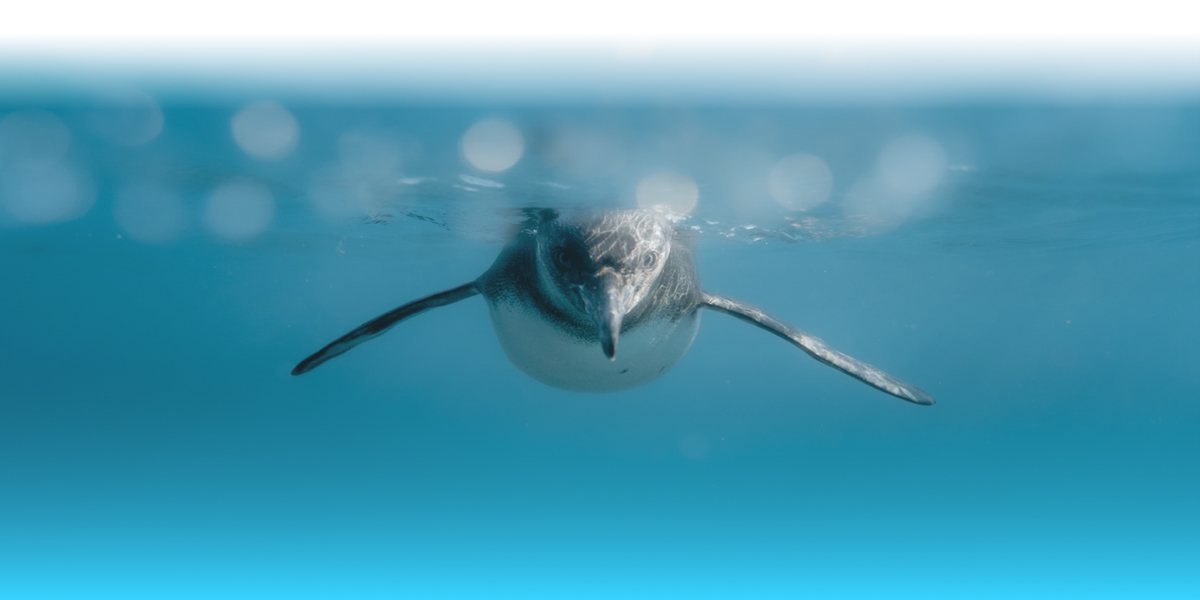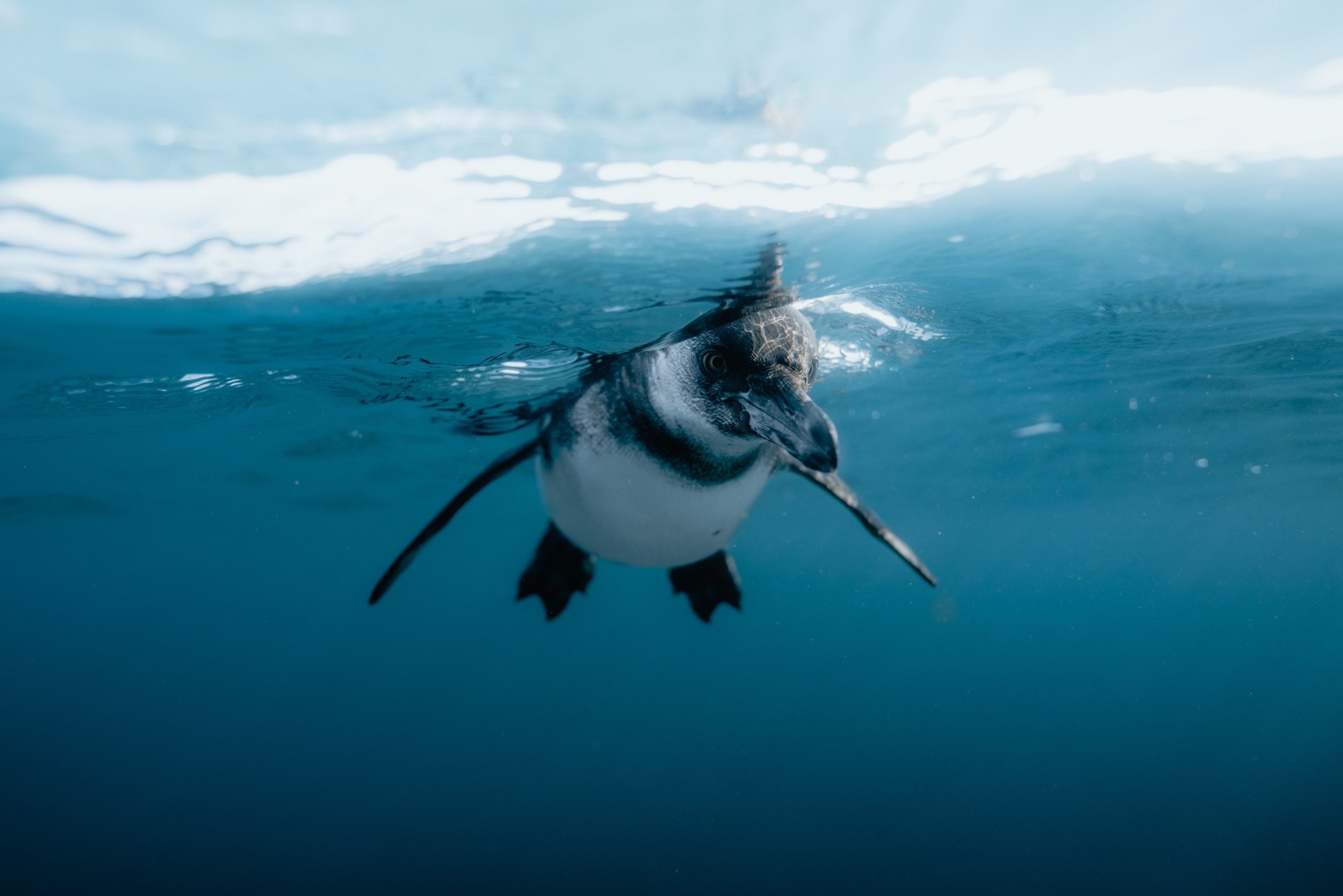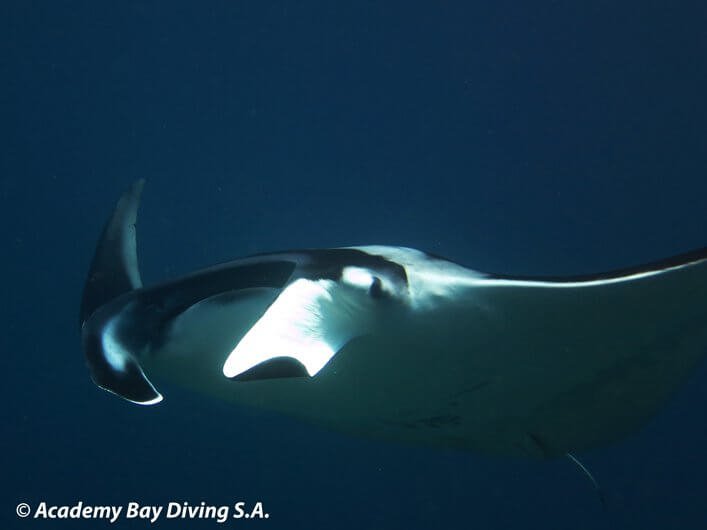
The Galapagos Islands are well known for their amazing biodiversity and high levels of endemism. Under the water, the Galapagos is also known for large shark populations, marine turtles and sea lions. The Galapagos is a paradise for those who love the underwater world. My name is Nathalia. I’m a Colombian Biologist and Open Water PADI Scuba Instructor. Six months ago I arrived to this paradise to learn and share information about Galapagos’ mantas. I currently volunteer for the Charles Darwin Foundation and Manta Trust and am helping develop the Galapagos Manta Ray Project.
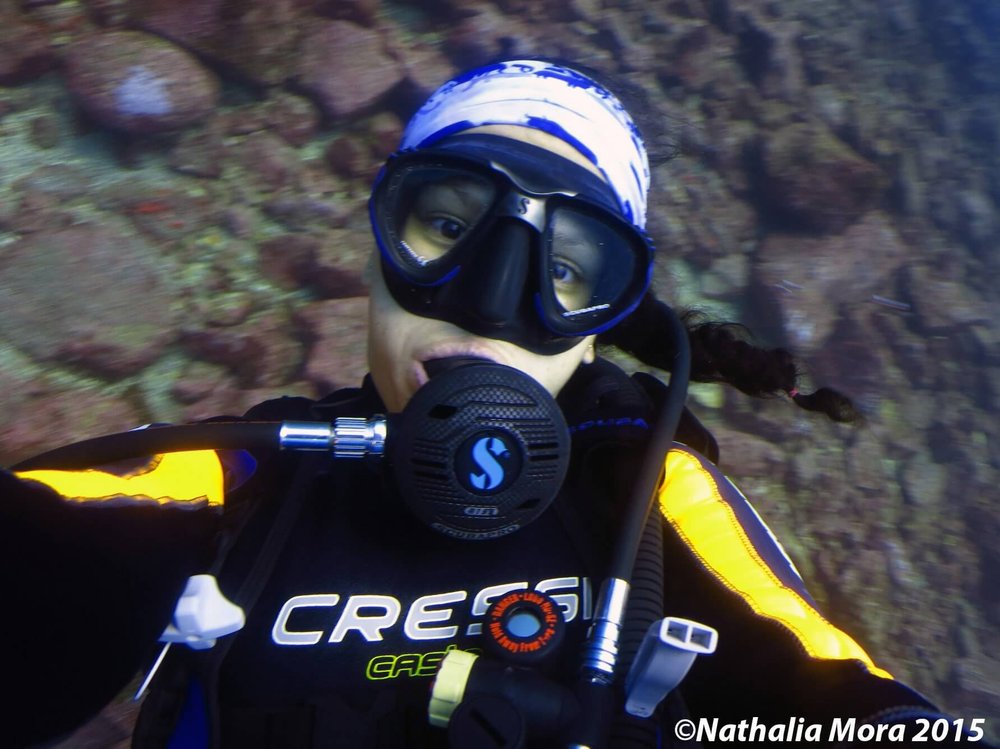
Manta rays use the waters of the Marine Reserve and are part of the underwater wildlife show of the islands; however, how do they use the Marine Reserve? Which places do they prefer? Are they migratory or not? These are some of the many questions about manta rays in Galapagos, and answering these questions is the principal goal of the project.
The first phase of the project was to plan it, this means how we are going to answer our questions about manta rays. During August we organized our ideas and prepared some materials at the office, which is an inspiring work place on the sea front.
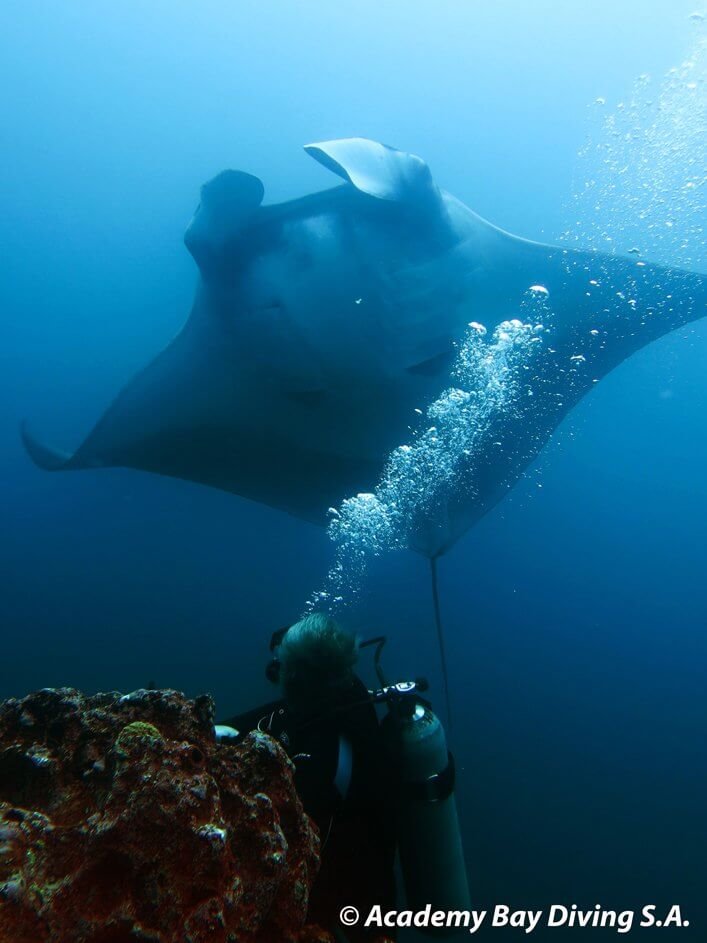
After the contact phase the dive shops started to participate actively in the project. They report manta and mobula ray encounters, share theirs photos and videos of mantas and allow me to go diving with them. One of the first dive operators was Academy Bay, as the owner Alice had started collecting photo ID’s since 2010, she was glad to be able to report it formally and I was so excited to see her folder with the manta pictures.
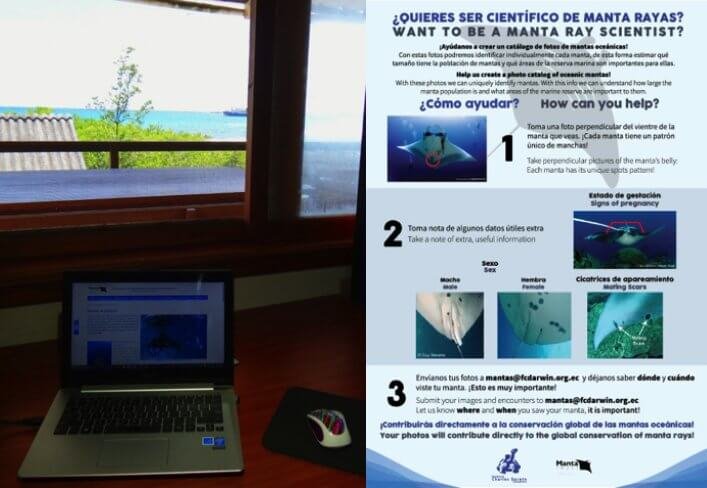
The second phase was to contact the Galapagos dive operators, in other words walking around the Island to knock on doors and explain the project. People in Ecuador are very friendly and this made the step easier. With time they became my friends and are curious to know more and more about the manta and mobula rays here. Each dive operator in Santa Cruz is like a different family for this reason the explanation of the project was unique in each dive shop. All of them have amazing stories about their past manta encounters and have different questions about them.
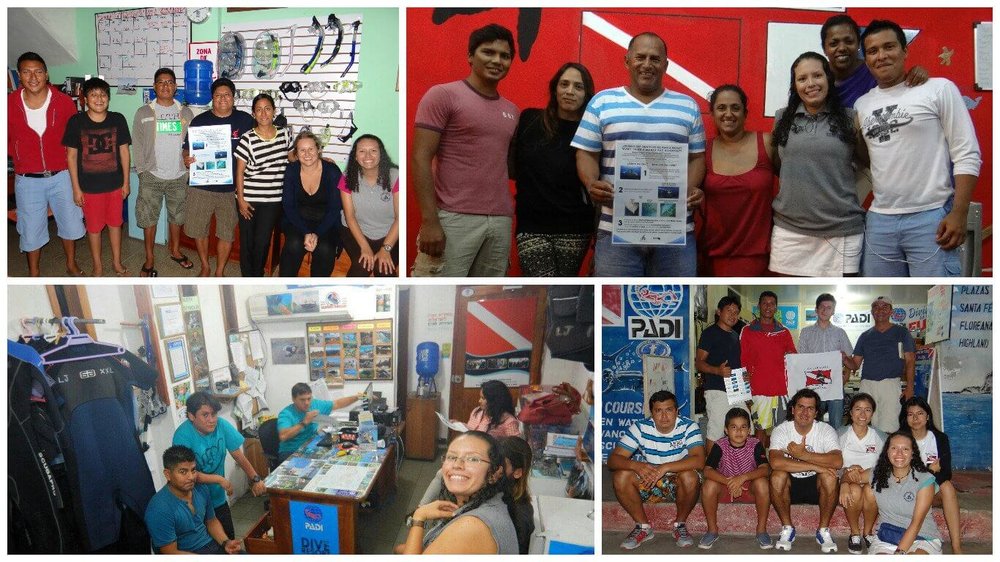
This is one of the most rewarding projects I have worked in. Currently we have already collected 61 manta ray photo ID’s, and I have taken part in 54 dives. On behalf of the and CDF, we would like to thank Scuba Iguana, Macarron Scuba, Galapagos People, Penguin expeditions, Eagle Ray Tours, Academy Bay, Nauti Diving and Galapagos Travellers and all the divemasters and instructors who have supported this project and are eager to learn more about the manta and mobula rays in the Galapagos.


